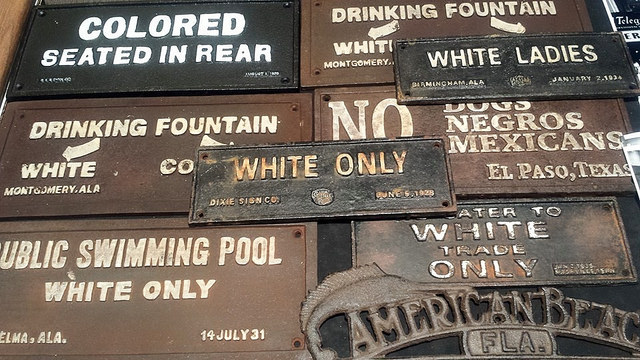The residential segregation in Oakland is recreated in the schools—that was the finding from an interesting recent analysis in vox.com. On their site you can enter your city and see how the gerrymandering of school neighborhood attendance zones either reinforce or reduce segregation. You can also see the extreme racial segregation that some families experience.
Hillcrest was 9% Black or Hispanic and East Oakland Pride was 94%. The data is a few years old though.
Different Rules, different results
In some districts the rules of student assignment increase segregation, in others they decrease it, in Oakland the differences in racial isolation between where students would go based on their nearest school geographically and where they go based on neighborhood zones is minimal. I encourage you to click through the Vox graphs some.
In a perfect world, neutral rules would be fine, but we ain’t in a perfect world. We are in a world shaped by racial segregation that was created and condoned by the state and reinforced by thousands of private choices. Most would view those past conditions as morally abhorrent, and so we have a duty to try to fix them rather than just watch them recreate themselves.
Understanding the Issue and Fixing the Past
There are a set of interactive charts and a good look at the problems of segregation—and the real solutions, which would involve not just OUSD but other districts( looking at you Piedmont and Alameda). But there are things we can do now. We could deliberately change our neighborhood attendance zones and the preferences we give to families for specific schools.
We could deliberately create neighborhoods attendance zones that, instead of laying flat above the 580, were oblong and reached down below it, bringing the Hills, Slope, and Flatlands into one school. We could also provide admissions preferences to families that would better balance demographics. And beyond the policy responses there are actions that we as individuals can take.
Voting with our Feet for Equity
Private choices reinforce our public problem of school segregation. And we as parents can make choices that either reinforce the inequality or undermine it. My homie at integratedschools.org has proposed taking the two tours challenge. The idea that families go outside of their comfort zone and just visit some more diverse schools, that they otherwise wouldn’t.
No guilt if you don’t want to enroll, but just consider some other schools, and maybe in that process we break down some of our own preconceptions. This won’t start to get fixed until people of good conscience act on their beliefs.
Why Desegregation
Desegregation is a practical equity reform for me, not a silver bullet. There is no magic of sitting next to a White kid that will make a Black kid smarter. But understanding segregation as a way to hoard opportunities and concentrate resources on some while neglecting others—I do believe that Black and Brown children will tend to get more resources in integrated schools, and also the system won’t allow those schools to really fall into the same neglect.
More broadly I think that children learn best together, when they are learning on a level playing field, and many of the lessons we need to be successful are social ones best learned in integrated settings.
Of all the reforms that OUSD has tried, integration through changing neighborhood attendance zones is one of the least costly financially and in terms of human capital—it involves changing lines on a map.
Now some folks might get upset, thinking they bought their way into a particular school—they didn’t—or if they did, then tell that to families whose schools will close or be consolidated.
Oakland is living a tale of two rapidly diverging cities it is up to us to integrate them.


I’m feeling funny because I agree with most of Dirk’s post: integration of Oakland Public Schools needs to be discussed seriously.
The downside of a serious policy of integration is that a policy of integration will be disruptive and enrollment and funding will drop. The option of charter schools will become more attractive unless lawsuits are brought against their segregation and they are force to integrate too.
Under current law integration is theoretically possible if the focus is class and not race.
History of Oakland regarding integration is it hired its first Black Superintendent Marcus Foster, and at time the first Black superintendent in a major American City, in part, to hold out against racial integration of the City’s School System whereas Berkeley integrated in part by busing and only recently hired a Black superintendent.